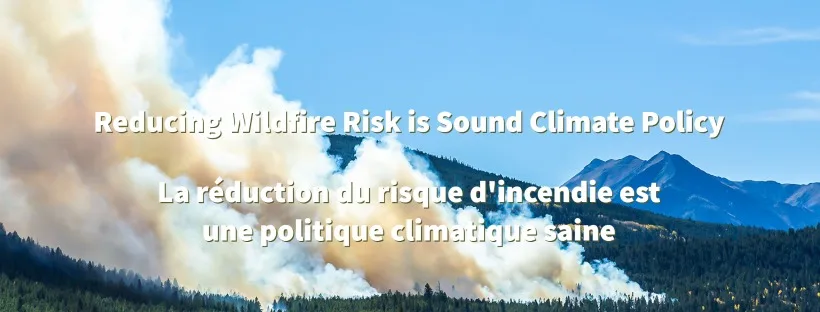Wildfire Risk Mitigation is Sound Climate Policy
Devastating wildfires have been burning from coast to coast in Canada this year, impacting thousands of Canadians with evacuations and loss of homes, communities and infrastructure, blanketing provinces and states alike in smoke that impacts thousands more people with poor air quality. While a familiar slogan may come to mind – Smokey Bear’s “Only YOU can Prevent Forest Fires” – the truth is wildfire mitigation requires more than a friendly reminder to douse your campfire
Increasingly dangerous wildfire seasons can be attributed lower than normal precipitation, extreme heat and drought conditions, aging forests, mortality from pest damage, and catastrophic weather events – the very real repercussions of a changing global climate. We will continue to see increased fire risks as climate change continues to impact our forests. Mitigation of wildfire risks includes responsible use of forested areas by citizens but that alone isn’t enough. In Canada so far this year more than seven million hectares have burned relative to the over 700,000 hectares that are actively managed each year. Sustainable forest management is already doing much to improve forest resiliency and reduce the severity of wildfire outbreaks in many managed areas, and we need more of this to protect forests and citizens alike.
Ninety percent of Canada’s forests are under provincial jurisdiction. While provincial and federal governments make substantial investment in wildfire recovery, there has been little change in the way of thinking about mitigating wildfire risk. We are immensely grateful for the tireless work done by firefighters and first responders across the country and recognize that policy changes are necessary to ease the burden and risks for everyone in the coming years. We need mitigation strategies that are proactive in their approach to wildfire prevention. These strategies include responsible and active management of forests to prevent destructive pest infestations and remove deadfall from catastrophic storm events – essentially keeping forests healthy and removing fuel load. Wildfires have also become the largest emitter of greenhouse gases and air pollution globally over the last two decades and will continue to increase if left unchecked. It’s clear that effective fire mitigation policy must be linked to climate policy if Canada is to achieve its commitments to decrease greenhouse gas emissions and slow the pace of climate change. The costs of inaction far outweigh the costs to increase forest management efforts, particularly in high-risk areas.
The increased costs should be viewed as opportunity for the development of a robust bioeconomy that will enhance new opportunities for forest-dependent communities by fostering job growth, attracting investments, and diversifying local economies, all while assisting in transitioning from fossil fuels. The establishment of bioenergy plants and additional manufacturing facilities will ensure utilization of low-grade forest fibre that is removed as part of fire mitigation and will provide viable alternative sources of sustainable energy for electricity and heat. While there is no one-size-fits-all solution across the diverse regions of our country, we must encourage governments to work closely with forest scientists, managers and operations specialists to establish clear plans in each jurisdiction to keep our forests healthy for the future and protect Canadian communities.
Sustainable forest management has proven to be one of the most effective tools to protect our forests, and the forest products industry is well positioned to support solutions nationwide.

